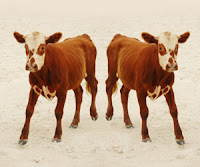 |
| Courtesy:glamourvanity.com |
The Katy Perry-Russell Brand wedding has lately been in the news for all possible reasons. Apart from being an extremely star-studded event attended by several celebrities, animals too were cordially invited.
Here's how animals were an integral part of the couple exchanging vows.
- The couple chose to wed in a resort near the Ranthambore tiger sanctuary in Rajasthan.
- A "slew" of animals participated in the marriage ceremonies. These included 21 camels, horses and elephants (PTI). Snake charmers also participated.
- Brand gifted a female Bengal tiger named Machli to Perry
- Perry in turn gifted a baby elephant to Brand
- In their loud celebrations, the couple created a lot of nuisance and violated several rules concerning the environment and the jungle area in particular. It disturbed many animals in the vicinity.
The Bad-It is obvious that they had planned beforehand to rope in many animals to celebrate their wedding. They should have been more sensitive to their cause by at least not violating the jungle rules. And they broke those extensively. For instance, local authorities had warned that no loud music should be played after 10 pm as that would disturb the animals in the Ranthambore National Park. However, blaring music was played well past 2 in the morning.
An environmental activist,Akhshay Sharma complained:
"They smoked, consumed liquor, carried weapons, disturbed endangered animals, changed route from No. 2 to No. 3 without permission, alighted from the vehicle (Gypsy), forced people (paparazzi) to alight from their vehicle and even snatched the keys of their vehicle in the park where tiger movement is quite normal," Sharma alleged.
"During the wedding on the next day on October 24, loud music was played in the resort beyond midnight which disturbed the wild animals and local residents, the green activist charged, adding such things were "violation" of section 29, 30, 31 and 32 of Environment Protection Act." (courtesy:Hindustan Times)
The Good: The bad part is however, just one facet of the wedding. It would be unfair to ignore the 'good' that also happened.
 |
| Courtesy:theconsortiumhotels.com |
Firstly, a star studded event involving high profile celebrities, like in this case, is bound to boost tourism in the area where it is taking place.The Ranthambore resort area is now drawing so much attention and limelight from everywhere, that it will be instrumental in spreading awareness on endangered animals, promoting tourism and consequently, revenues will also come in. The revenues can be effectively used towards the conservation of the National Park and the animals.
Secondly, Perry and Russell have both gifted animals to each other. Although they will not be able to take these creatures to their country, but the money paid for them will be used for the welfare of those animals and conservation of the Park in general.
Yes, it is right to be critical about the couple violating the environmental and wildlife laws.Stricter enforcement of these laws must be there.I don't know whether Perry-Russell are actually compassionate towards animals and whether it was their fondness for animals that made them involve so many animals. Or was it simply a stunt to get animals to participate, to make it look attractive and different to the whole world. I really don't know.
But what I am concerned with is how we can move on from here. It is upto Indian authorities now as to how they make constructive use of the publicity and the awareness and the funds generated. It can be utilised for the conservation of flora and fauna as well as protection measures for the animals and promote tourism.







